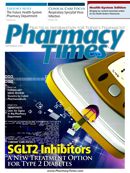Publication
Article
Pharmacy Practice in Focus: Health Systems
The Future Health-System Pharmacy Department
In health-system pharmacy circles, people continue to discuss the growing pharmacy enterprise, the possibility of pharmacy executives having a position in line with other hospital executives within the c-suite, and the aligning of multiple hospital pharmacy departments to form a corporate structure. While these are noble discussions, I worry whether they are fully congruent with the needs of the future pharmacy department.
I recently reread Clayton Christensen’s book The Innovator’s Prescription, which I highly recommend. In it, Christensen attempts to demonstrate how disruptive innovation will reduce health care costs and improve care. As I was reflecting on some of the author’s statements about how health care will be transformed by disruptive innovation over the next decade or so, I started thinking about how departments of pharmacy will be structured amid all of the changes. If pharmacy wants to achieve its desired future state, I believe the current model is not organized to achieve these aims.
When I consider the future, I envision a health care system that values and pays for quality patient outcomes and one where pharma-cists are credentialed and reimbursed for ambulatory care services. Disruption of the system will be required to change the way things are accomplished and justified. I myself have been associated with a pharmacy department that has 37 credentialed pharmacists who are operating under collaborative practice agreements, so I understand the challenges involved in achieving change. Here are some of the issues at hand:
(1) Differing business models—The current business model that pharmacy departments have maximized is a transactional one. This is referred to as fee-for-service and typically is manifested through the purchase and sale of medications, but also includes pharmacy services. Ambulatory pharmacy services under a disease state management model are justified and valued based on how much money a pharmacist can bill for their clinic. This is not how one would describe the business model of the desired future state. The future pharmacy will be built on achieving and maintaining certain quality outcomes, and not based on the inputs required to get there. I would argue that these 2 business models are so different that they cannot exist in 1 pharmacy department.
(2) Consistent overhead and infrastructure—Many pharmacy departments do not employ pharmacists to work in the clinic because the economics in a fee-for-service model do not work. What this means is that the current reimbursement for patient care services does not cover the cost of the pharmacist. Some argue that the amount of reimbursement would need to increase to justify having a pharmacist on staff in the clinic. No one ever mentions that maybe we need to create lower-paying pharmacist positions. This is because departments have a consistent salary structure for pharmacists from which they cannot deviate. If a completely different model for cli-nic-based pharmacists were created that differed from the overhead model of the existing department, the pharmacy department would have greater flexibility. A reduction in pharmacist salaries may be required to create an economic model that works. This cannot be done with the current overhead across the entire department that was used for justifying acute care services.
(3) Pharmacy leadership that has little to no ambulatory experience—Almost all directors of pharmacy gained their experience in the acute care environment. For the few who have real clinical experience, it probably occurred through inpatient rounding. However, future changes in pharmacy will be focused on ambulatory care. How can leaders of the pharmacy enterprise be successful in building this kind of pharmacy practice model when none of them have worked there or had any frontline management experience there?
While I understand the perils of having 2 pharmacy departments in an organization and know that it is unrealistic to expect pharmacy directors to have ambulatory experience, I do not think pharmacy can take advantage of a future that pays for quality patient outcomes without some transformative thinking. If we are not nimble and able to approach the model differently, we might miss out on an opportunity. The Innovator’s Prescription lists many examples of businesses that were very successful in a single model, but no longer exist because they were unable to innovate and transform themselves to the needs of the consumer. I do not want this to be said of health-system pharmacy, but if we do not change in the present, we will be unable to maximize our future.
Stephen F. Eckel, PharmD, MHA, BCPS, FASHP, FAPhA, FCCP, is associate director of pharmacy, University of North Carolina Hospitals, and clinical associate professor and director of graduate studies at the University of North Carolina Eshelman School of Pharmacy.







